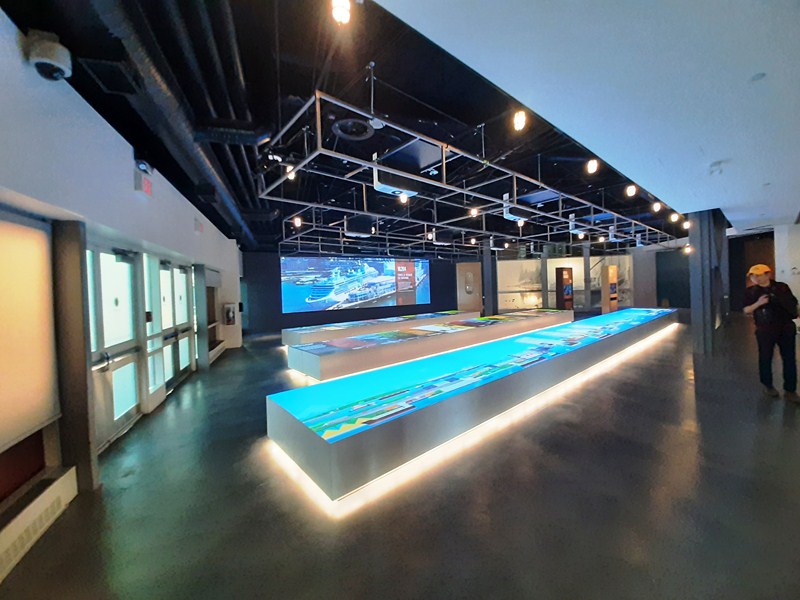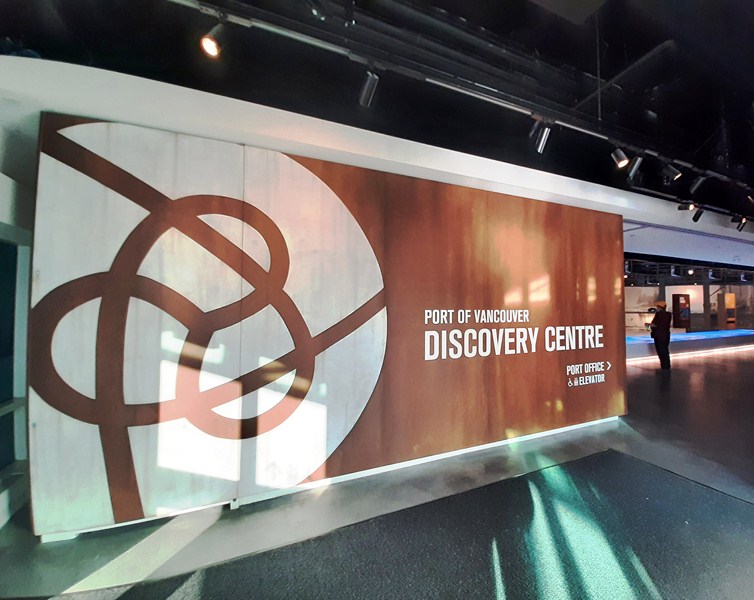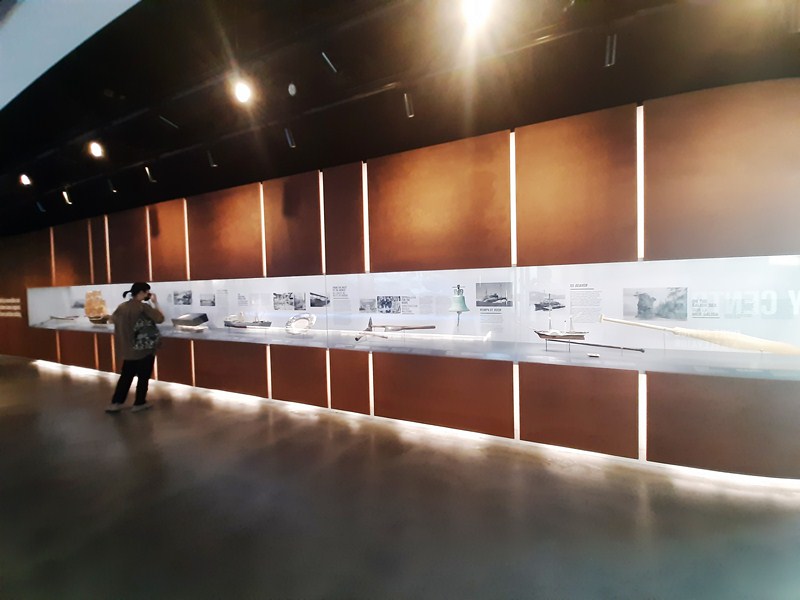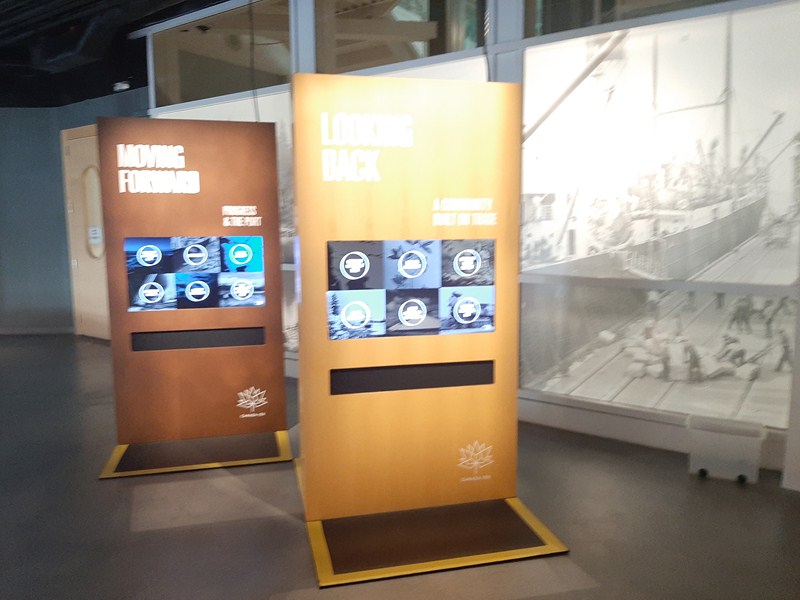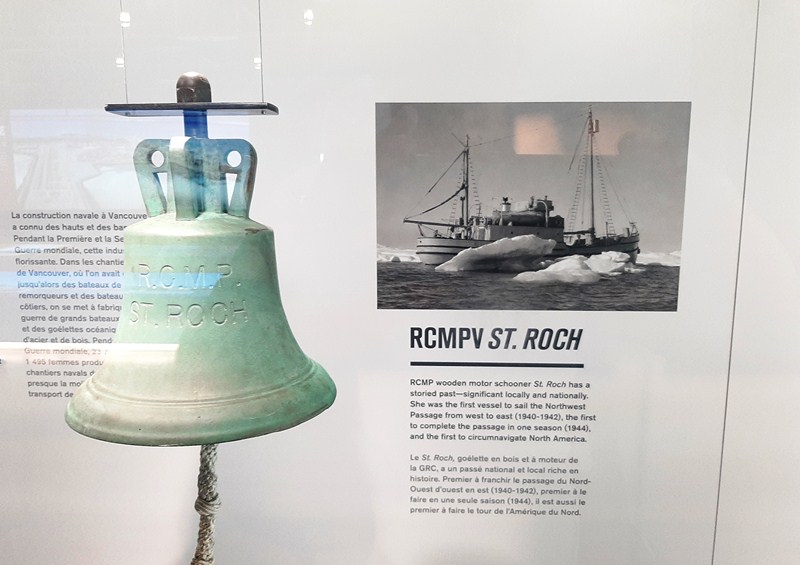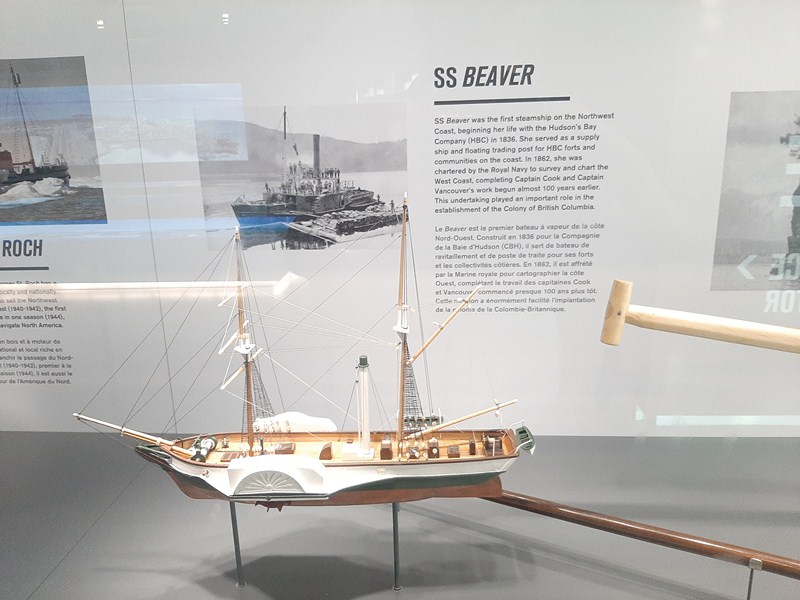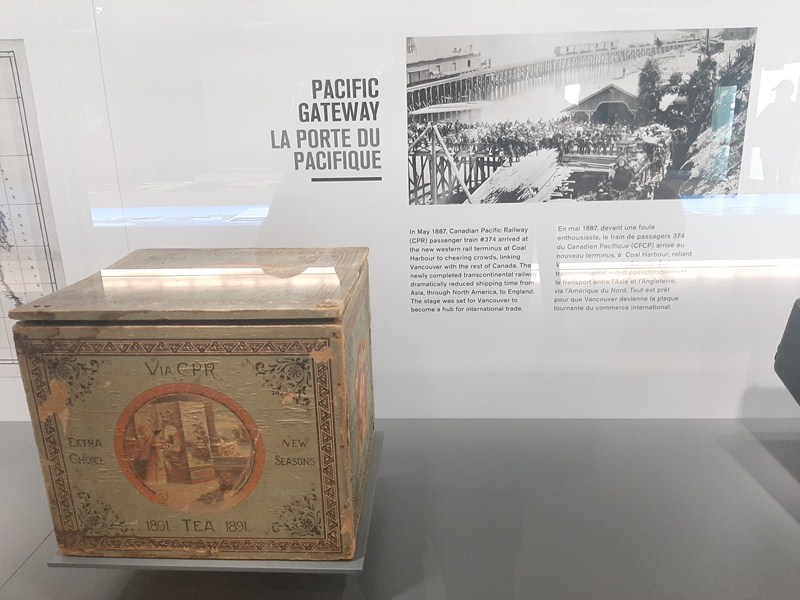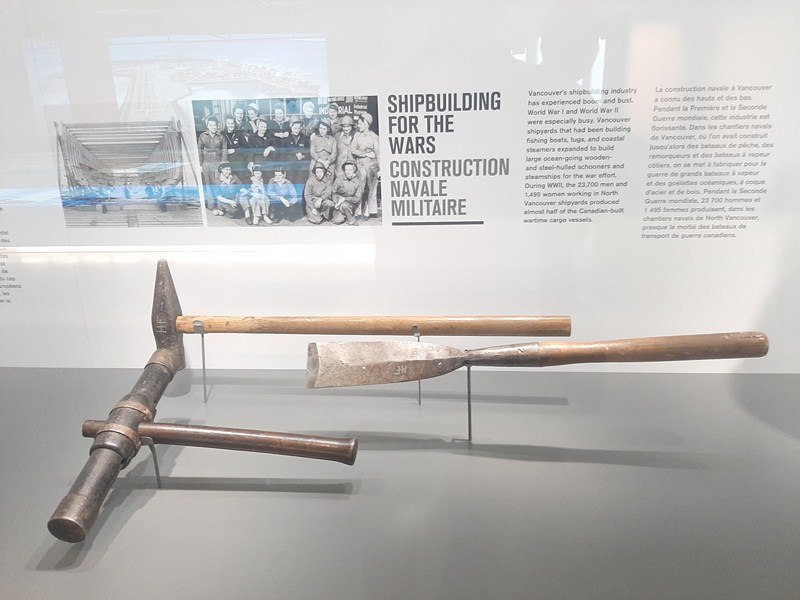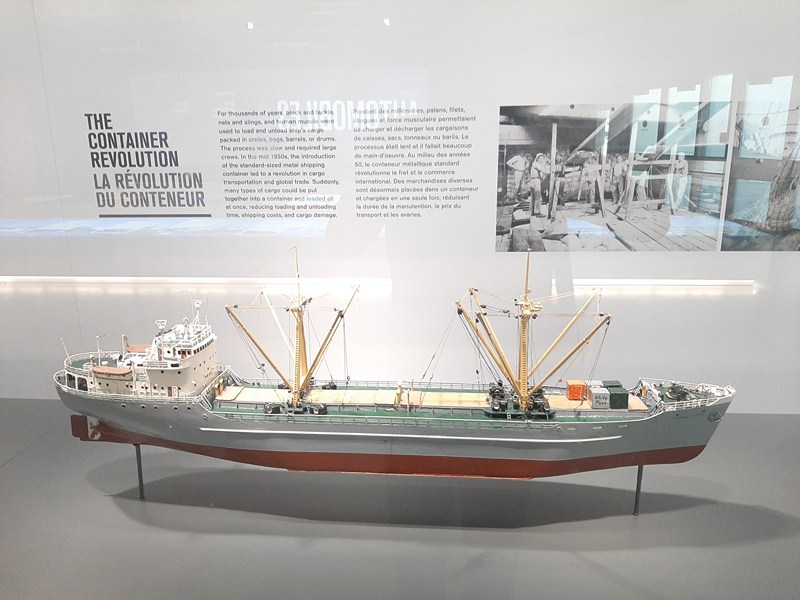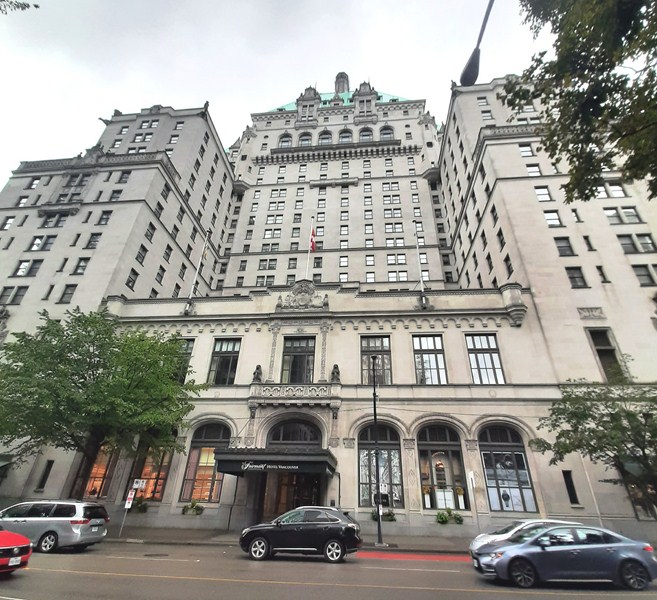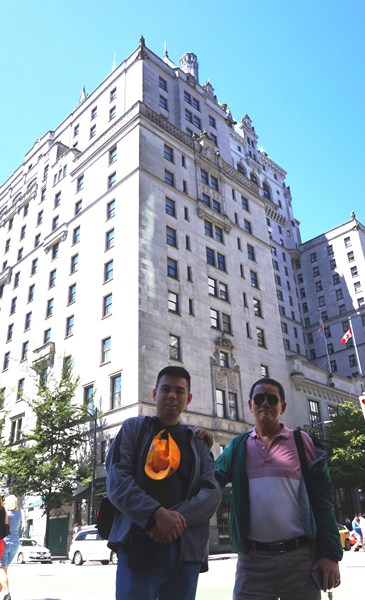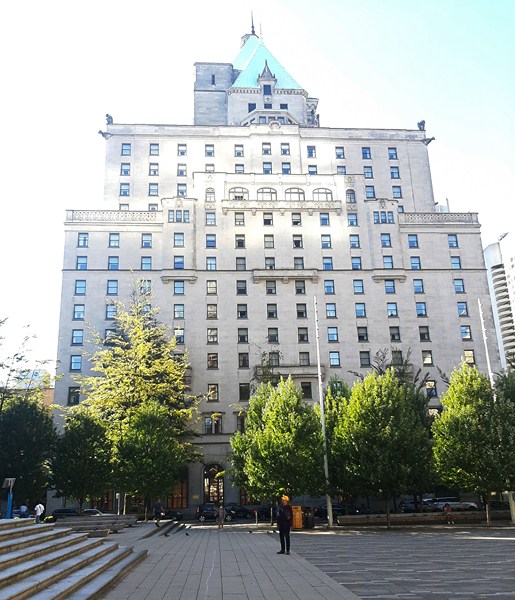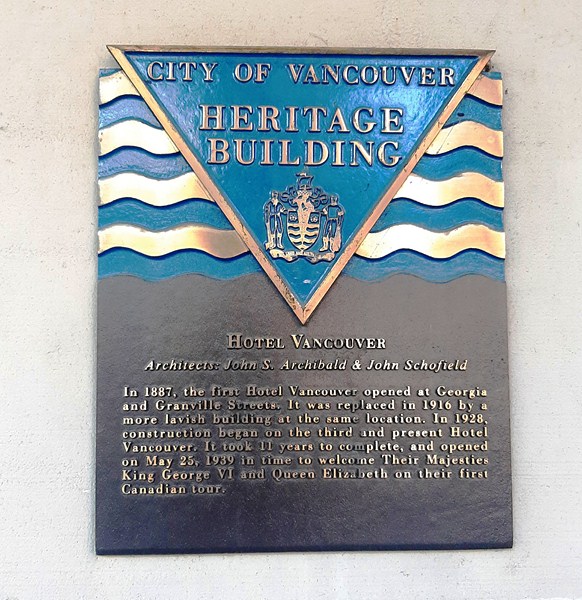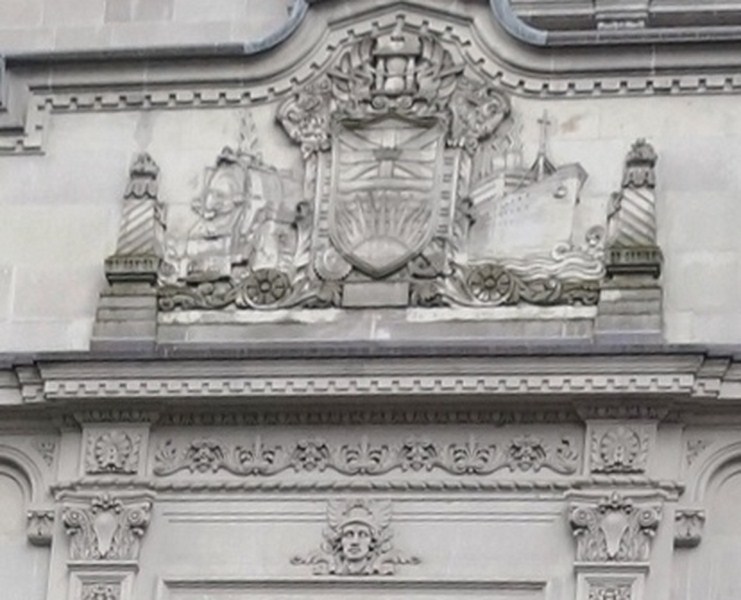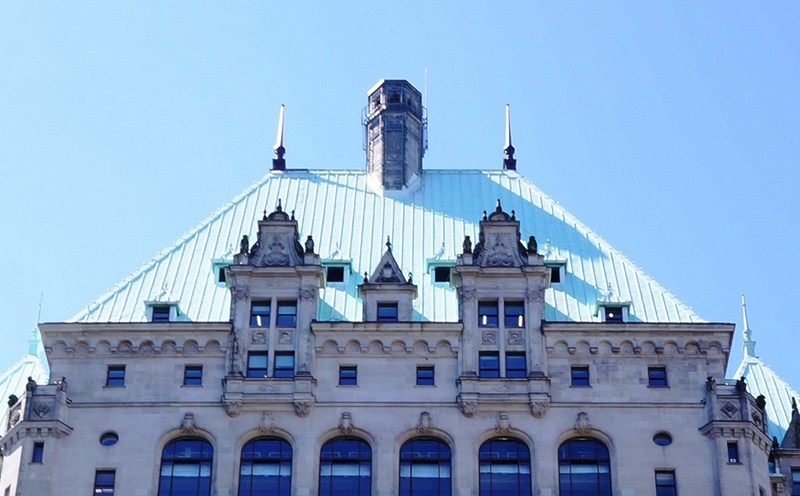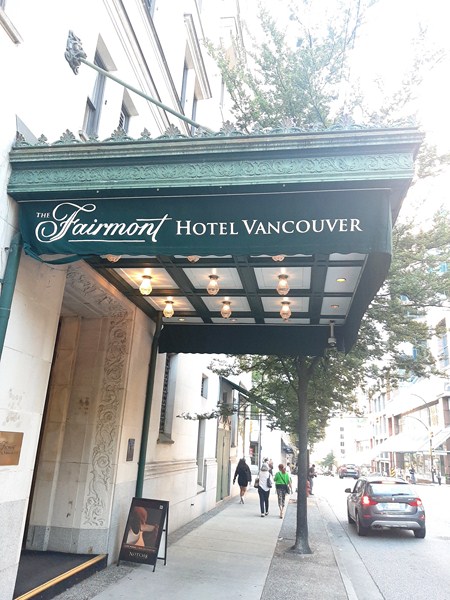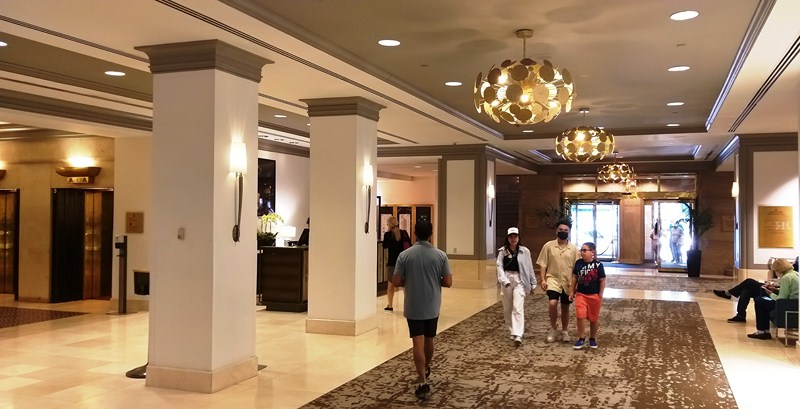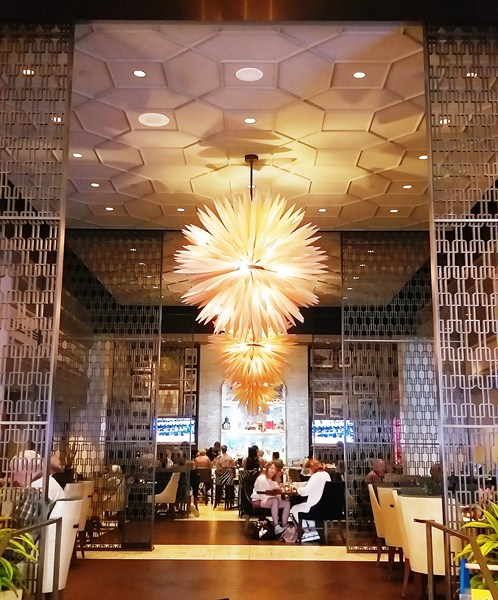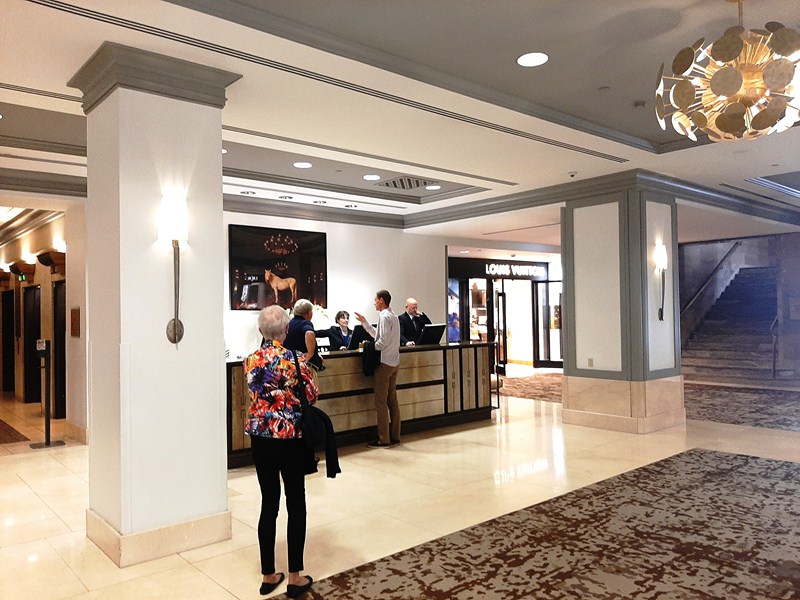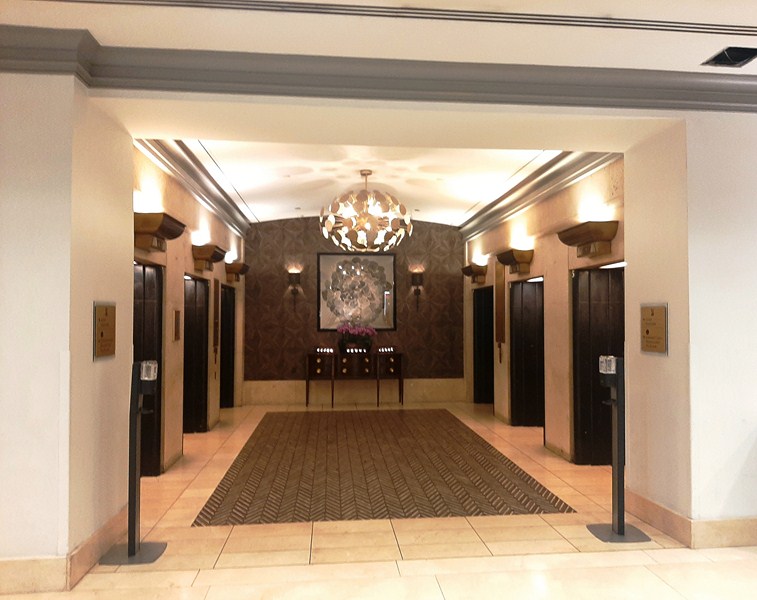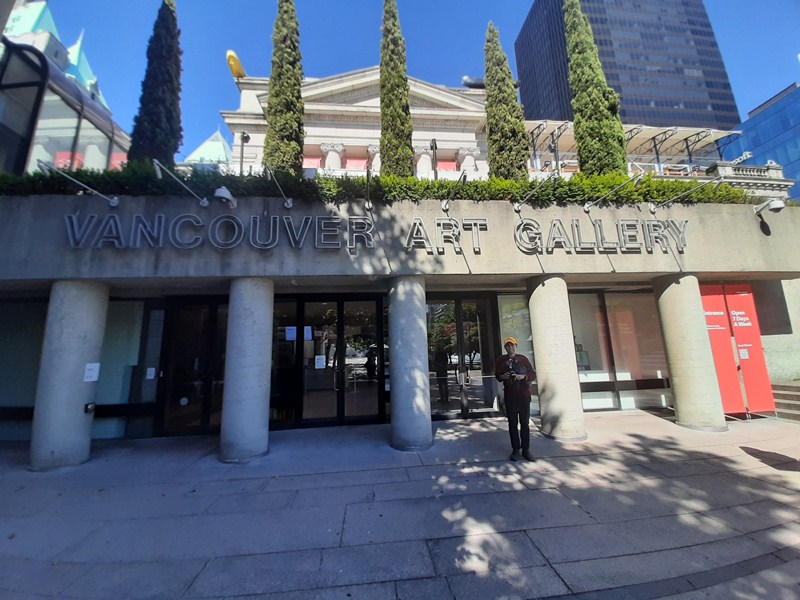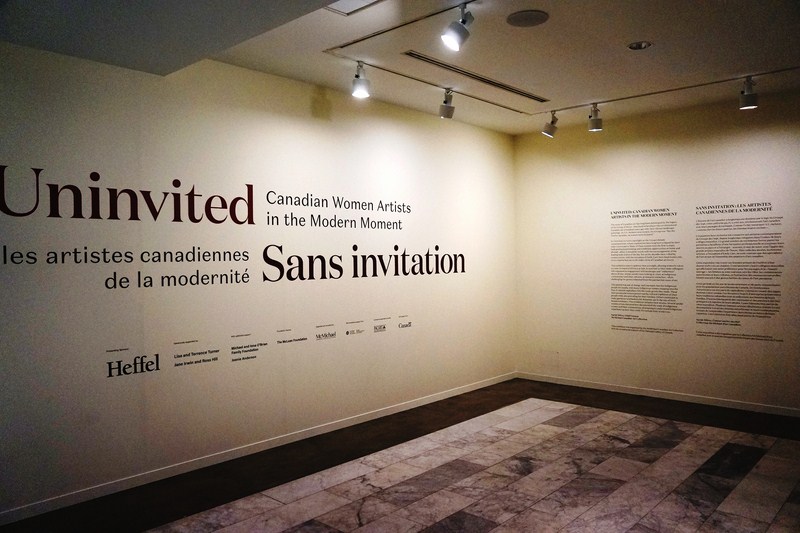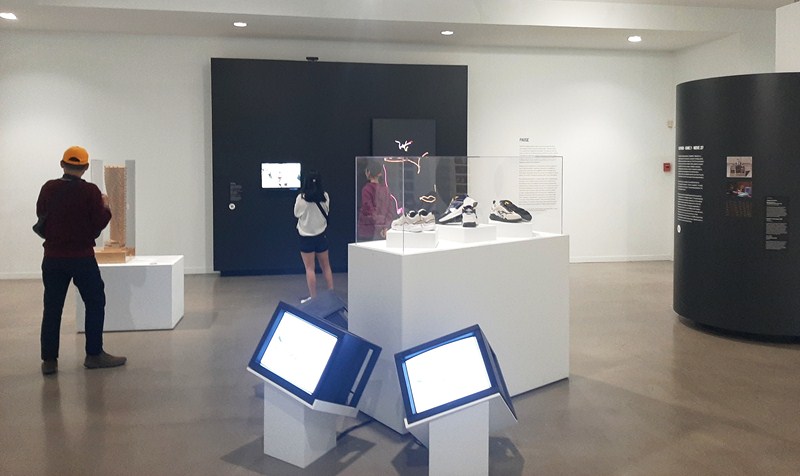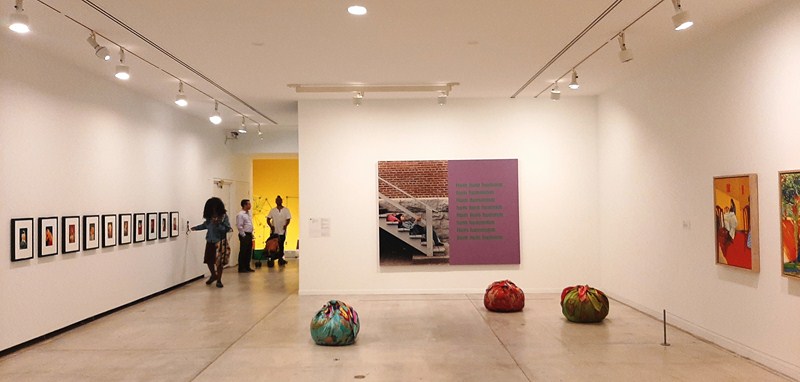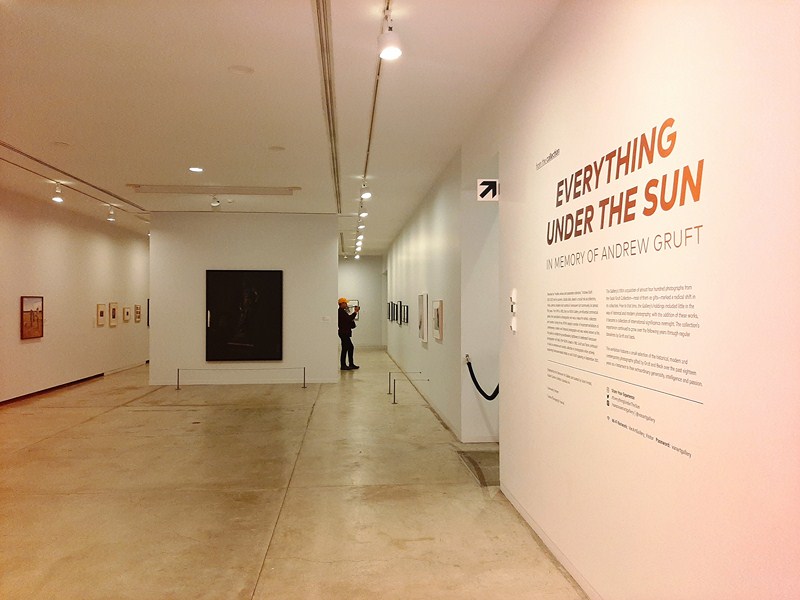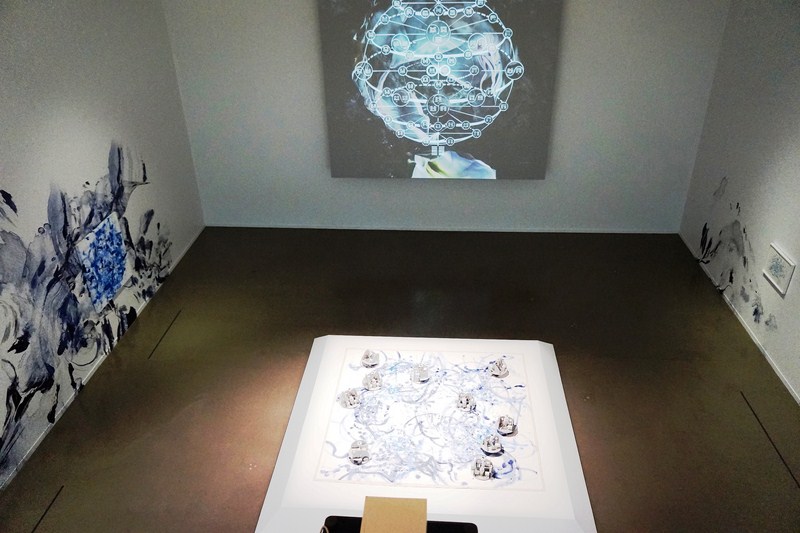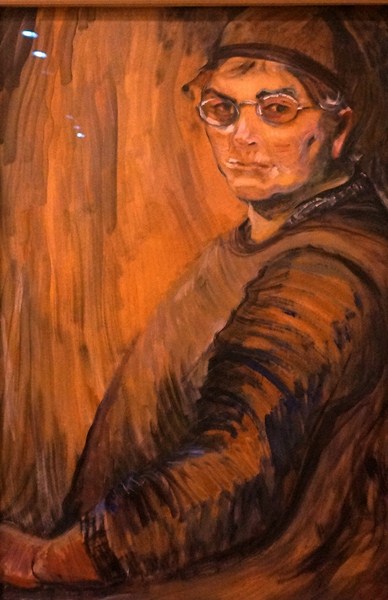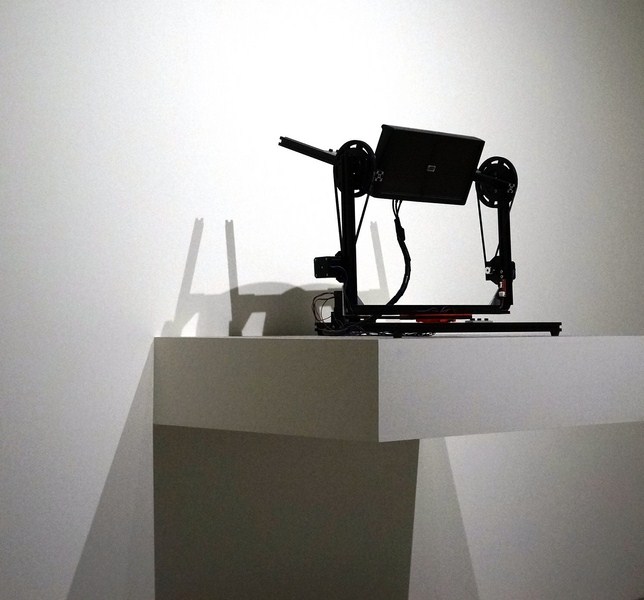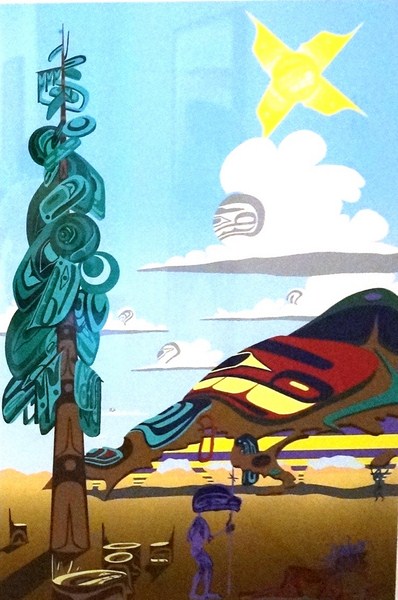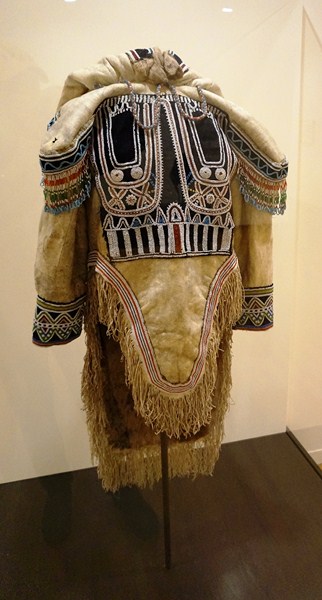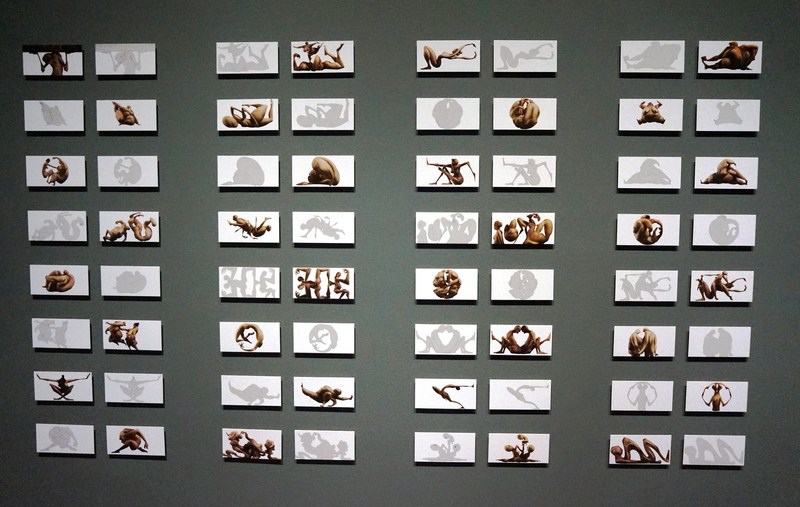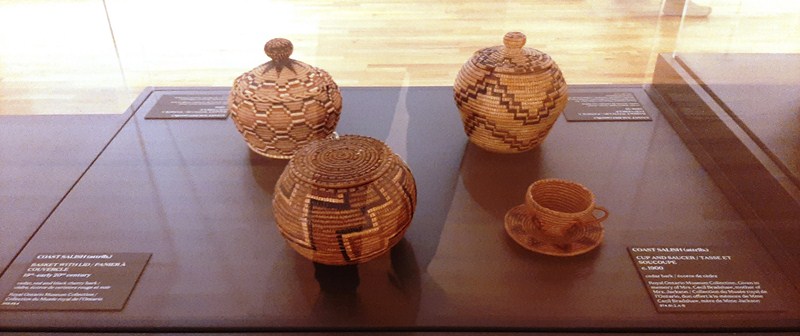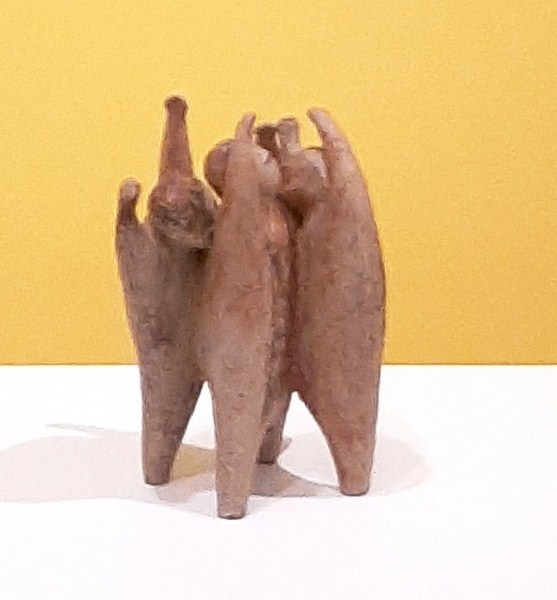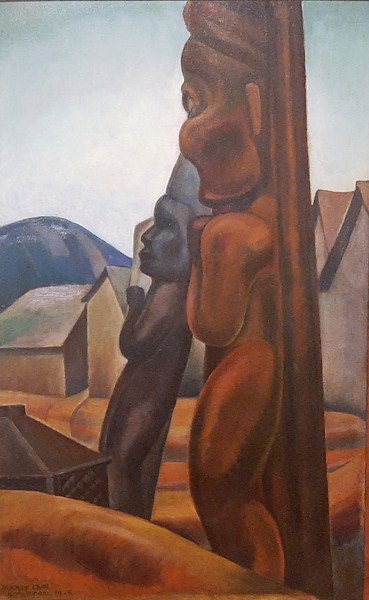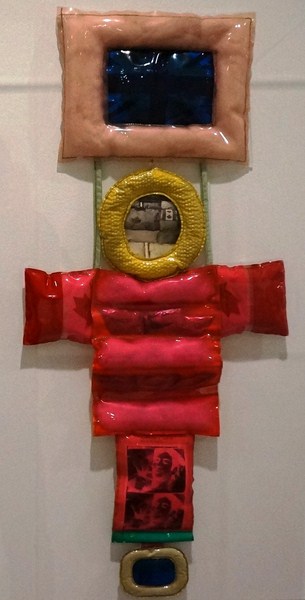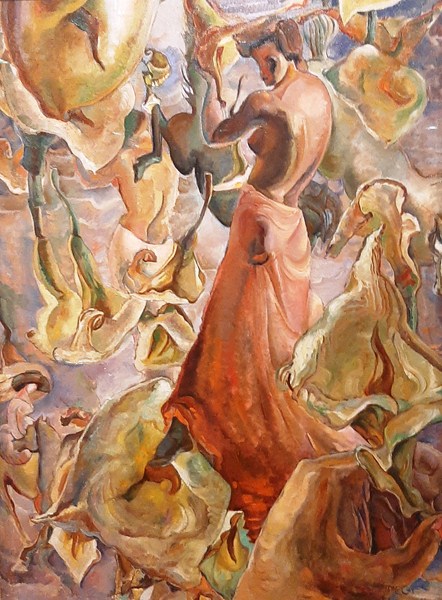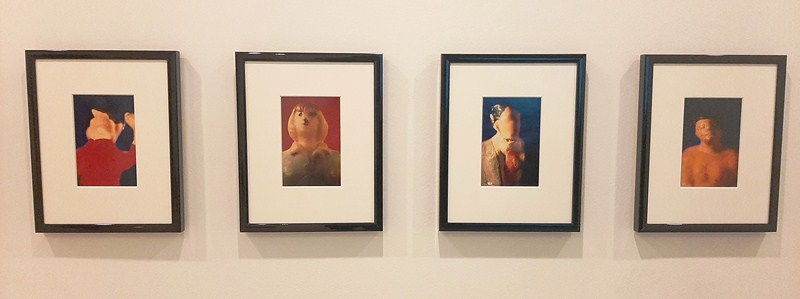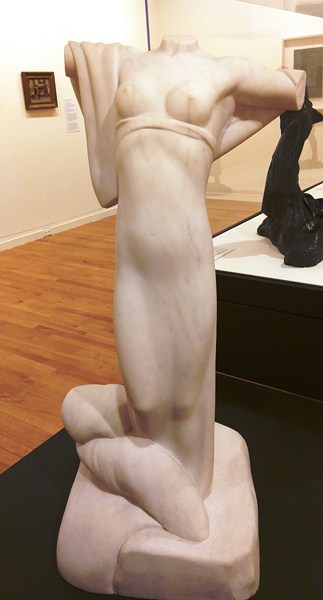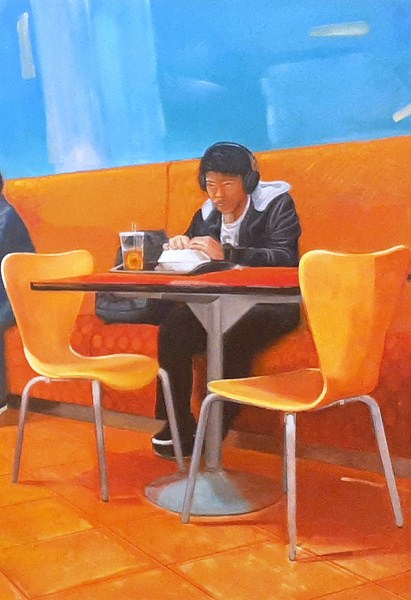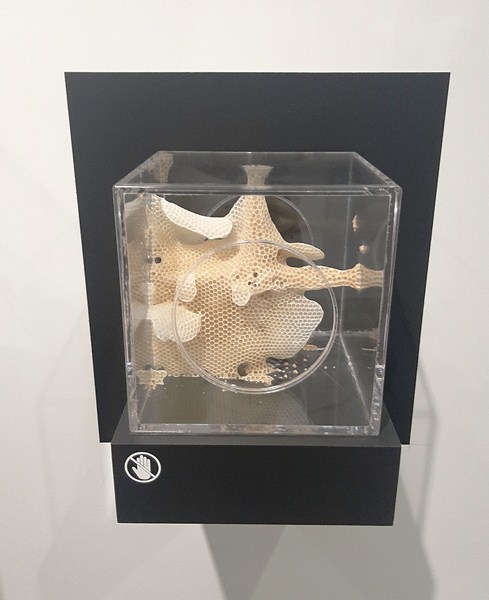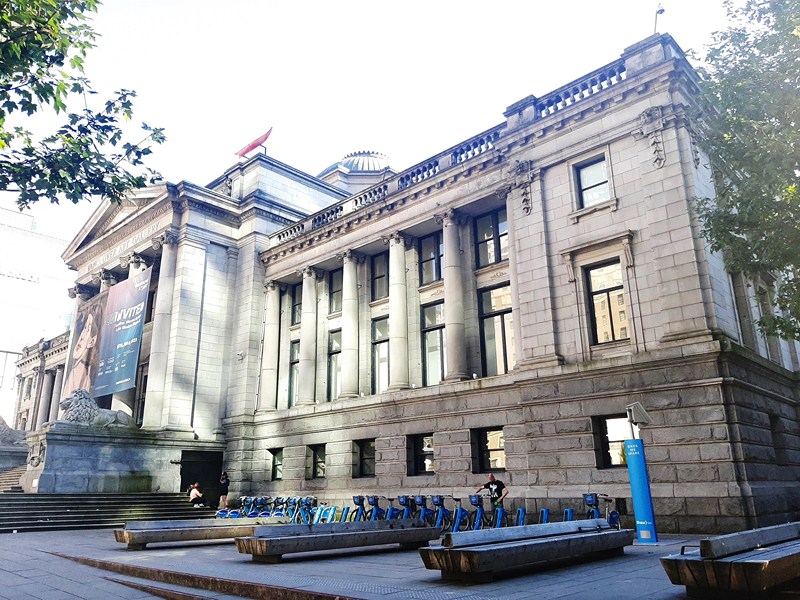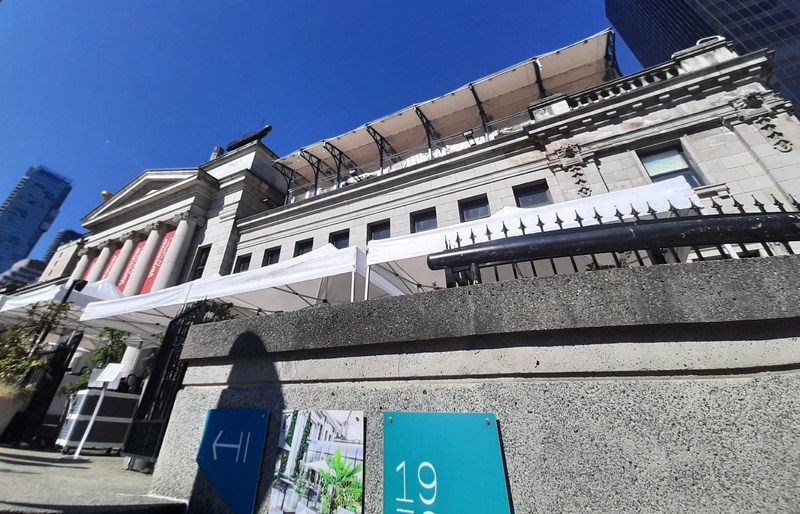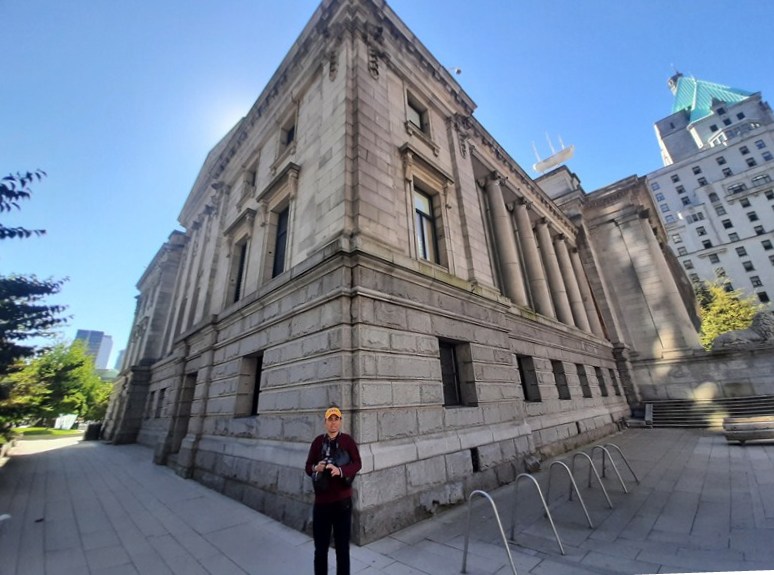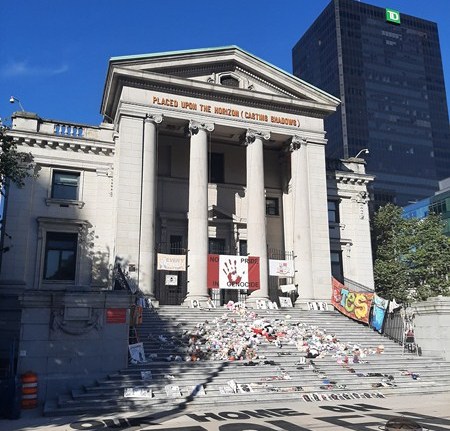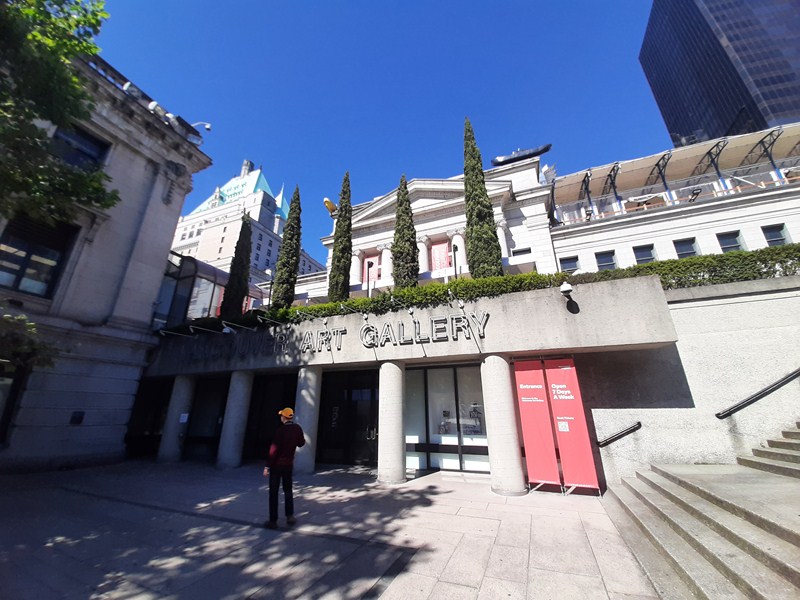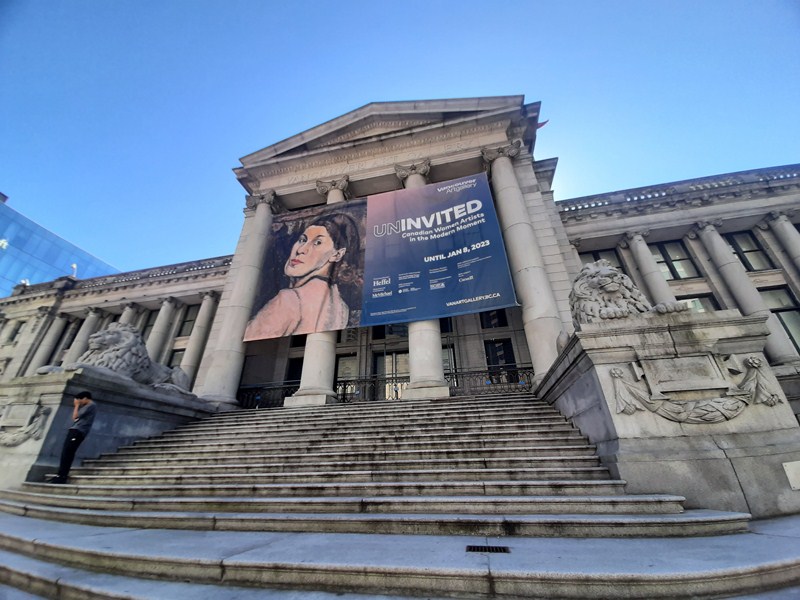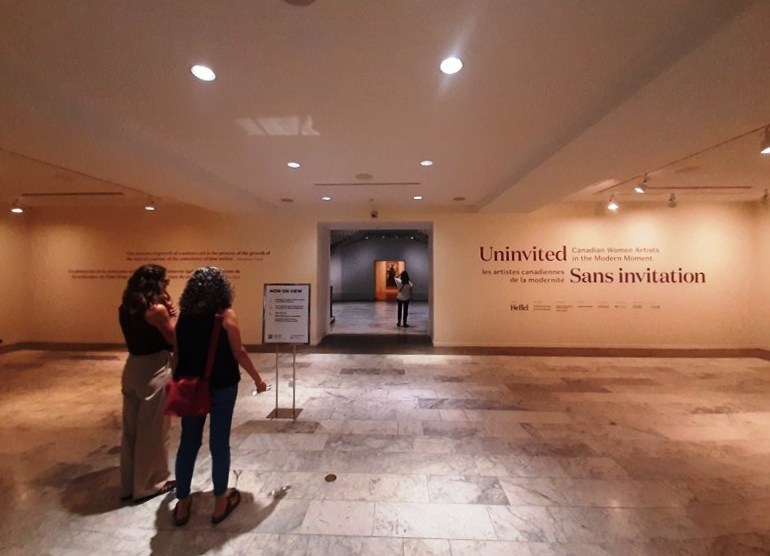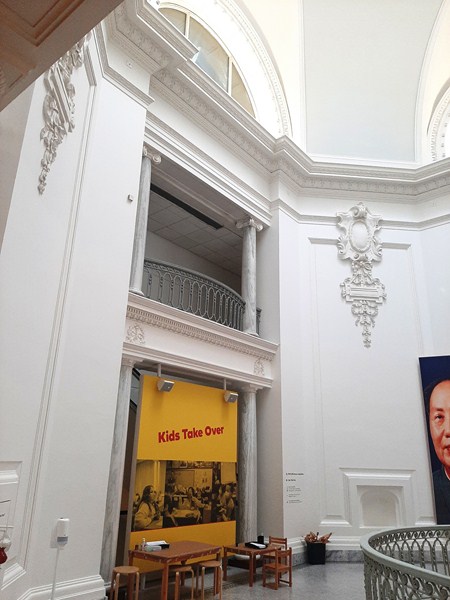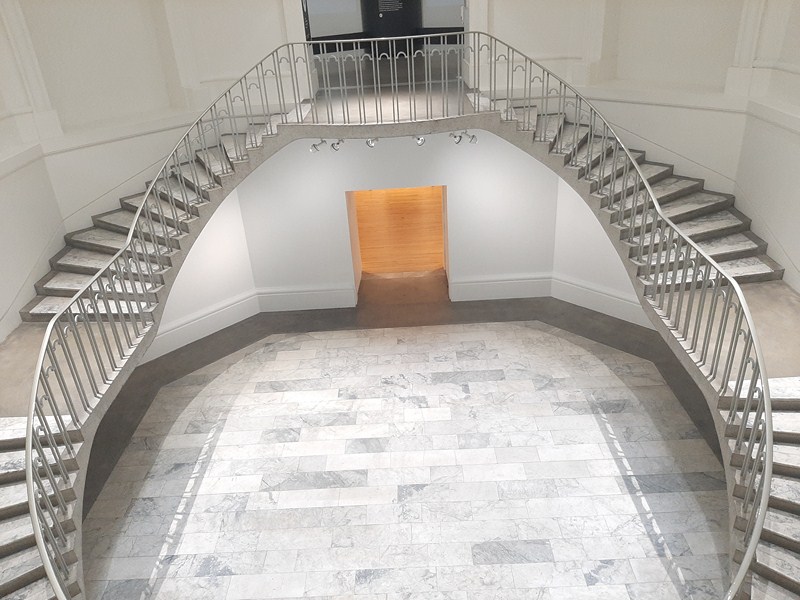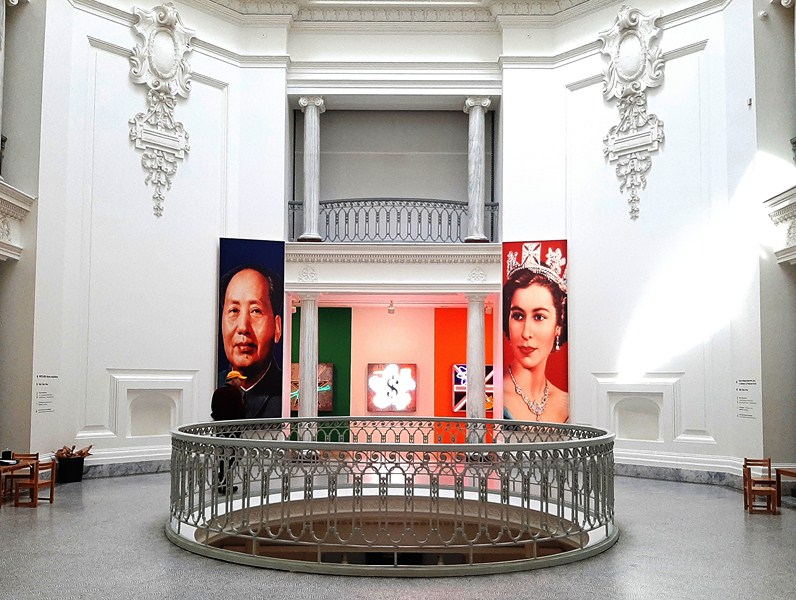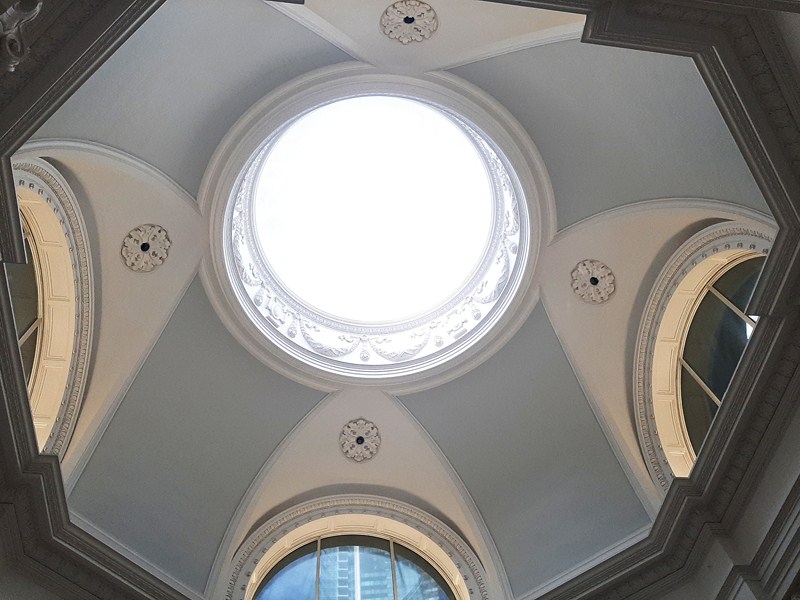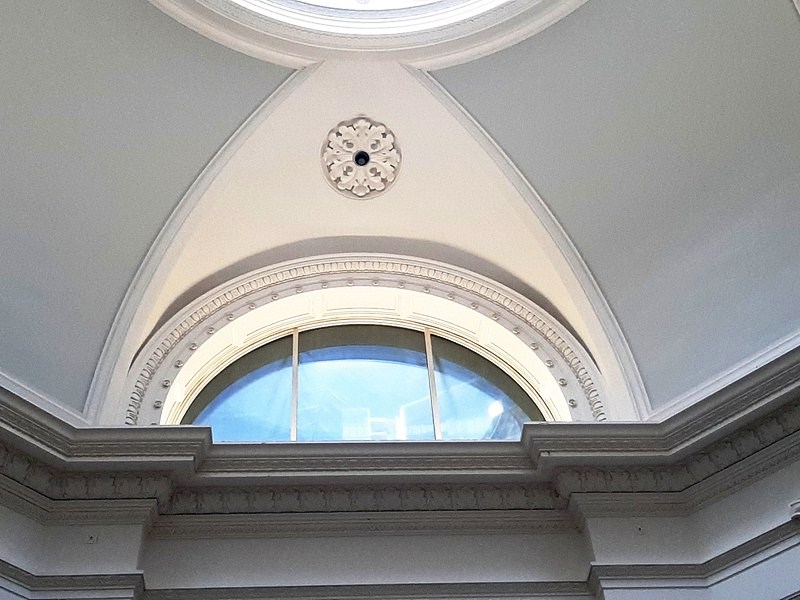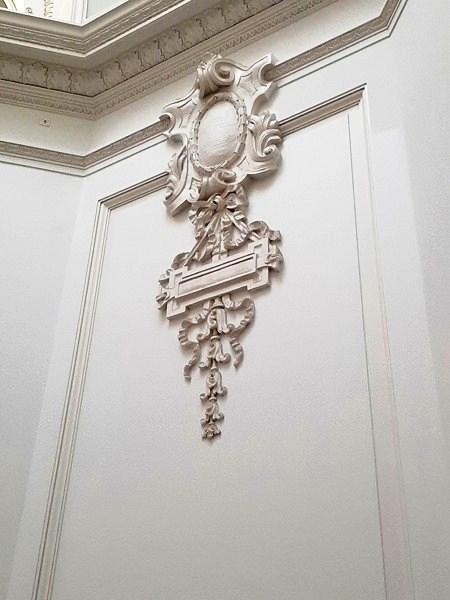The exciting, high tech Port of Vancouver Discovery Centre, serving multiple arms of the Port Authority, offers a space that converts from visitor Discovery Centre to education centre, to town hall meeting space, to event venue, and at times, all in the same 24 hours.
Located on the waterfront at Canada Place, below Fly Over Canada, at the north end of the pier, it is one of the facility most used spaces and a great place to learn about Canada’s largest and busiest port in a fun and interactive wayas well as engage in the stories and ideas that have shaped the port city.
Through the integration of interactive panels, projection mapping surfaces, digital informational kiosks, and broadcast-quality equipment, Eos Lightmedia helped transform the Port of Vancouver Discovery Centre into a highly flexible space, working with the Vancouver Fraser Port Authority as well as designers Waddell & Conder, content producers Burnkit, Resolve Design for the history wall, and fabricators Three Dimensional Services to design, supply and integrate the layers of lighting, audiovisual, software and controls technology.
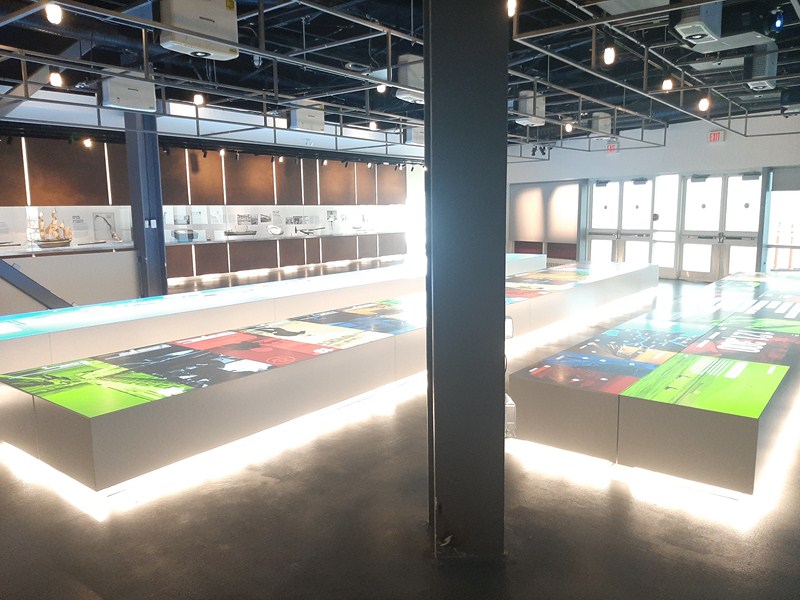 It features interactive touch screens; animated graphics and informative videos; historical artifacts and ship models; west-facing views of Vancouver harbor and access to the Canada Place promenade.
It features interactive touch screens; animated graphics and informative videos; historical artifacts and ship models; west-facing views of Vancouver harbor and access to the Canada Place promenade.
The Discovery Centre is also the venue for a school program designed especially for local elementary students in grades four to six, who use interactive, projection driven benches with embedded touch sensors that provide hands on education about the busy goings on of Canada’s largest port. Eos Lightmedia’s custom control software allows facilitators of the space to change the vocabulary and content to make it suitable for both younger and more mature student groups.
With hundreds of square feet of projection mapped surfaces for interaction and digital informational kiosks, here you can experience the sights and sounds of a busy harbor while learning about Canada’s largest and most diversified port.
You can also learn about early port development; trade, innovation and shipbuilding; harbor operations today; working on the waterfront; environmental programs; and facts and statistics. In contrast to the cutting edge technology, there’s also stunning historical display case, spanning the length of the facility, that is replete with artifacts from the ports long history in the city.
The entire atmosphere of the room can also change, from its public setting, to a sleek professional meeting room setting with just a click of a button on the facility’s sophisticated control system.
The interactive touch panels break apart into bench seating for over 100 and, for the Port Authority’s many meetings, announcements, and group functions, the large digital map wall becomes the presentation screen for keynote speakers.
Broadcast quality lighting and audio equipment also allows for events to be live-streamed, in high definition, with professional results without the need for off-site equipment rentals.
Within the center, every function has its own custom lighting look controlled by DMX over the dedicated exhibit network within the space. The central control system links the benches, their projectors, and the audio systems, automatically turning on and off with a preset, adjustable schedule. The facilities operations team can also instantly recall the various ‘scenes’ within the center.
Port of Vancouver Discovery Centre: 100 The Pointe, 999 Canada Place, Vancouver, British Columbia. Admission is free. Open daily, 8 AM to 8 PM. Download the Port of Vancouver community map to follow along during the virtual harbout tour.

